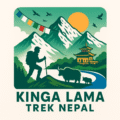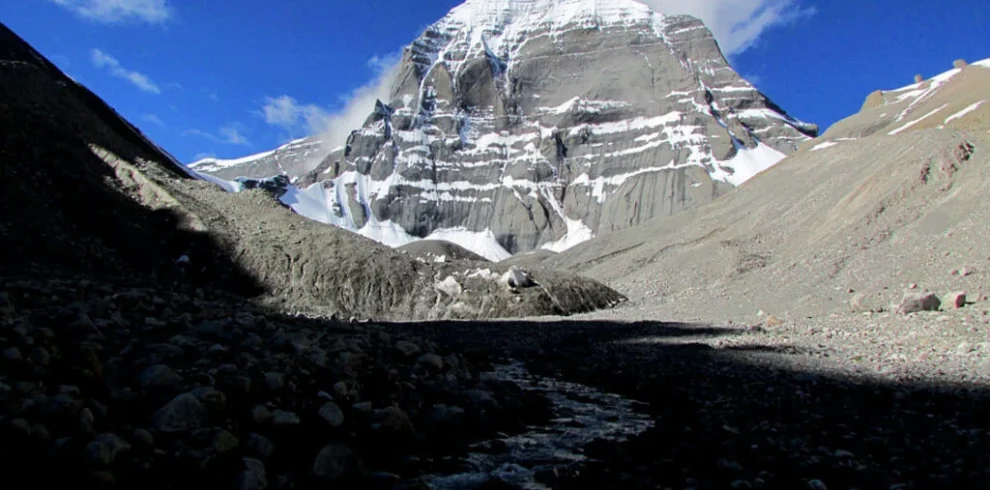Pricing is negotiable and can be discussed in USD or Euros.
Mera Peak Climbing Itinerary of 16 days takes you to Nepal’s highest trekking peak, Mera Peak. Lying in the Hinku Valley of the Everest Region, Mera Peak is a popular climbing peak with an easy route. A favorite of many climbers who come to Nepal, Mera Peak is the perfect acclimatization peak if you are planning to climb Mount Everest or any of the major peaks in the Khumbu Region.
The route to Mera Peak lies off the beaten path in the rarely visited Hinku Valley. The trail is secluded, and the area is wild and pristine, with very few human settlements. Most nights, you will be sleeping at teahouses located at isolated kharkas or summer camps of yak herders.
Overview
Mera Peak (6476m) Climb is the highest trekking peak in Nepal and a suitable challenge for a first-time climb in the Himalaya. Our specially devised itinerary allows optimum time for building fitness and acclimatisation – key factors that have contributed to our success record.
Trip Highlights
- Ascend the highest trekking peak with an experienced trekking and climbing guide.
- Pass through Zatrwa La, alpine jungle and glacier trails.
- Incredible panoramas of the eight-thousanders.
- Trek through the stunning village and experience the lifestyle of Sherpas.
- The climb of Mera comes after a week-long trekking and acclimatization program designed to assist you with the best chance of pleasant and rewarding journey.
- Culturally charming, captivating villages with itinerary designed accordingly.
- The breathtaking spectacle of five 8000 peaks including Everest, Lhotse, Cho Oyu, Makalu, and Kanchenjunga as well as other peaks
- Hike through the foothills of mountains, terraced rice fields, rhododendron forests, and mountain villages where ethnic minorities live.
- Acquaintance with the authentic Sherpa culture and traditions.
Itinerary
Upon arrival at Tribhuvan International Airport, a representative from our team will greet you and transfer you to your hotel in Kathmandu. After check-in, you can rest or explore the nearby area. In the evening, attend a short briefing about the Mera Peak expedition.
Take an early morning scenic flight from Kathmandu to Lukla (2,860m)—a thrilling 35-minute journey with views of the Himalayas. Upon arrival, begin a short and gradual 3–4 hour trek through pine and rhododendron forests to reach Chutanga (3,020m). This peaceful spot is ideal for rest and acclimatization before heading to higher altitudes.
Today is a challenging and rewarding day. The trail begins with a steep climb through forests and rocky terrain to reach Zatrwa La Pass (4,610m), the first high point of the trek. From the top, enjoy stunning views of Dudh Kunda, Kongde Ri, and other peaks. After crossing the pass, descend gradually along alpine meadows and ridges to reach Thuli Kharka (4,300m). Total trekking time is around 6–7 hours, with incredible Himalayan landscapes throughout the day.
Today’s trek involves a gradual ascent and descent through rugged terrain. You’ll pass high alpine meadows and rocky paths surrounded by spectacular mountain views. The trail is less crowded and offers a peaceful atmosphere as you make your way to Kote, a small settlement at 4,182 meters. The trek takes about 5 to 6 hours, allowing time to rest and acclimatize before the next stage.
Today’s trek follows the scenic route along the Inkhu River, winding through rocky valleys and rugged mountain terrain. The trail gradually ascends to Thaknak at 4,358 meters, offering spectacular views of nearby peaks like Mera Peak and Cho Oyu. The trek takes about 4 to 5 hours, providing a good balance of challenge and acclimatization in a remote, serene environment.
Take a well-deserved rest day at Thaknak to acclimatize to the high altitude. Use this time to relax, hydrate, and recover your strength. You can explore the surrounding area, enjoy the stunning mountain views, and prepare yourself for the upcoming climb. Rest days are crucial to prevent altitude sickness and ensure a safe, successful expedition.
Today you’ll trek higher into the alpine zone, leaving behind trees and entering rocky, barren terrain. The trail gradually climbs to Khare, a small settlement nestled at 5,000 meters. This challenging 4 to 5-hour trek offers breathtaking views of towering peaks like Mera Peak and the surrounding glaciers. Khare serves as a key acclimatization and preparation spot before the summit push.
From Khare, the trail continues steadily upward to the Mera Peak Base Camp at 5,300 meters. This 3 to 4-hour trek takes you through rugged rocky terrain and glacial moraine. Base Camp is the main staging area for summit preparations, offering spectacular views of nearby peaks and glaciers. Here, climbers rest and gear up for the final ascent.
Today’s trek is a steady climb from Base Camp to Mera High Camp at 5,780 meters. The trail becomes steeper and more challenging, crossing rocky slopes and loose scree. This shorter 3 to 4-hour hike helps with further acclimatization and prepares you physically and mentally for the summit day. High Camp offers panoramic views of Everest, Lhotse, Makalu, and Cho Oyu peaks.
An early pre-dawn start marks your summit attempt of Mera Peak. You’ll ascend steep snow and ice slopes using crampons and ice axes, guided carefully for safety. Reaching the summit rewards you with breathtaking 360-degree views of Everest, Lhotse, Cho Oyu, Makalu, and other towering Himalayan giants. After celebrating this incredible achievement, you’ll descend carefully back down to Khare for rest and recovery. The day is long and physically demanding, but unforgettable.
After a good rest in Khare, begin your descent back toward lower elevations. The trek to Kote takes about 5 to 6 hours, following a gradual downhill path through alpine meadows and rocky terrain. Along the way, enjoy beautiful mountain vistas and the changing landscape as you move closer to the forested areas. Kote offers a comfortable stop to rest and recover after the high-altitude climb.
Today, you’ll trek uphill from Kote to Thulikharka, a scenic journey of about 4 to 5 hours. The trail passes through alpine meadows and rocky slopes, gradually ascending into higher terrain. Thulikharka is a peaceful settlement offering spectacular views of the surrounding peaks and a quiet place to rest before continuing your descent.
Today’s trek is a challenging but rewarding day. You’ll begin with a steep ascent from Thulikharka up to the Zatrwa La Pass at 4,610 meters, the highest point on the route, offering stunning panoramic views of the surrounding Himalayan peaks. After crossing the pass, the trail descends steadily through forests and traditional villages, eventually reaching Lukla at 2,840 meters. The trek takes around 7 to 8 hours, marking the end of the Mera Peak expedition journey.
On your final day, take an early morning scenic flight from Lukla back to Kathmandu. The 30- to 40-minute flight offers breathtaking views of the Himalayas, including Everest and other majestic peaks. Upon arrival in Kathmandu, you’ll be transferred to your hotel, marking the end of your Mera Peak expedition with memories to last a lifetime.
Enjoy a well-earned rest day in Kathmandu to relax and explore at your own pace. You can visit cultural sites like Pashupatinath Temple, Boudhanath Stupa, or Durbar Square, shop for souvenirs in Thamel, or simply unwind at your hotel. This free day allows you to soak in the vibrant atmosphere of Nepal’s capital before your departure.
After completing your trek, you'll drive back to Kathmandu through scenic countryside roads. When you're ready for your international flight, a representative from Kinga Lama Trek Nepal will transfer you to Tribhuvan International Airport (TIA) for your final departure.
Cost
Cost Includes
- Complimentary airport pick-up and drop-off
- 3, nights' accommodation in Kathmandu with breakfast
- Farewell dinner in a typical Nepali restaurant
- All necessary trekking permits, such as National Park, TIMS, climbing permits.
- During the mountain season, three meals per day are consumed: breakfast, lunch, and dinner.
- Complimentary duffel bag.
- Staff insurance, salary, meals, accommodations, equipment, transportation.
- Rescue arrangements, if necessary
- Certificate of Achievement
- English-speaking professional local guide who is government-registered, First Aid and Eco-trained, and carries a medical kit.
- professional climbing guide and his meals, accommodations, insurance, salary, etc.
- All necessary climbing gear, such as a tent, rope, ice axe, and so on.
- All necessary expedition gear, tents, cooking equipment, etc. for Mera High Camp.
Cost Excludes
- Lunch and dinner in Kathmandu.
- Emergency rescue evacuation if required.
- Personal accident insurance or Helicopter rescue.
- Airfare international flights.
- Nepal entry visa fee, Visa issuance is easy at the arrival.
- Any kind of Alcoholic, hot and cold drinks, hot shower.
- Alcoholic beverages, Mineral water, laundry, phone calls, internets.
- Personal climbing equipment
- All kind of Personal Expencess
- Ice fall fees Garbage Deposit (Sharing with other member) if applicable.
- Wake talkies &Filming permit.
- Any others expenses which are not mentioned on Price Includes section
- Tips, gifts, souvenirs.
FAQs
Mera Peak is considered a moderately difficult climb. It requires a good level of physical fitness and previous trekking experience is recommended. Some technical climbing skills may be required, especially towards the summit.
While previous climbing experience is not mandatory, it is highly recommended to have prior trekking experience at high altitudes. Basic mountaineering skills such as using crampons, ice axe, and ropes are essential. It is advisable to climb with an experienced guide or join a reputable trekking agency that provides skilled guides.
You will need a climbing permit issued by the Nepal Mountaineering Association (NMA) and a Sagarmatha National Park permit. These permits can be obtained through a registered trekking agency or the NMA office in Kathmandu.
The best time to climb Mera Peak is during the spring (March-April-May) and Autumn (September-November.Decmber) seasons. These months offer stable weather conditions, clear views, and favorable climbing conditions. However, it is important to check the weather forecast before starting the climb.
During the trek, you will stay in teahouses or lodges available in the villages along the route. However, at higher altitudes, you will need to set up tents for camping. Teahouses provide basic facilities such as beds, meals, and toilets, while camping requires carrying your own camping equipment.





